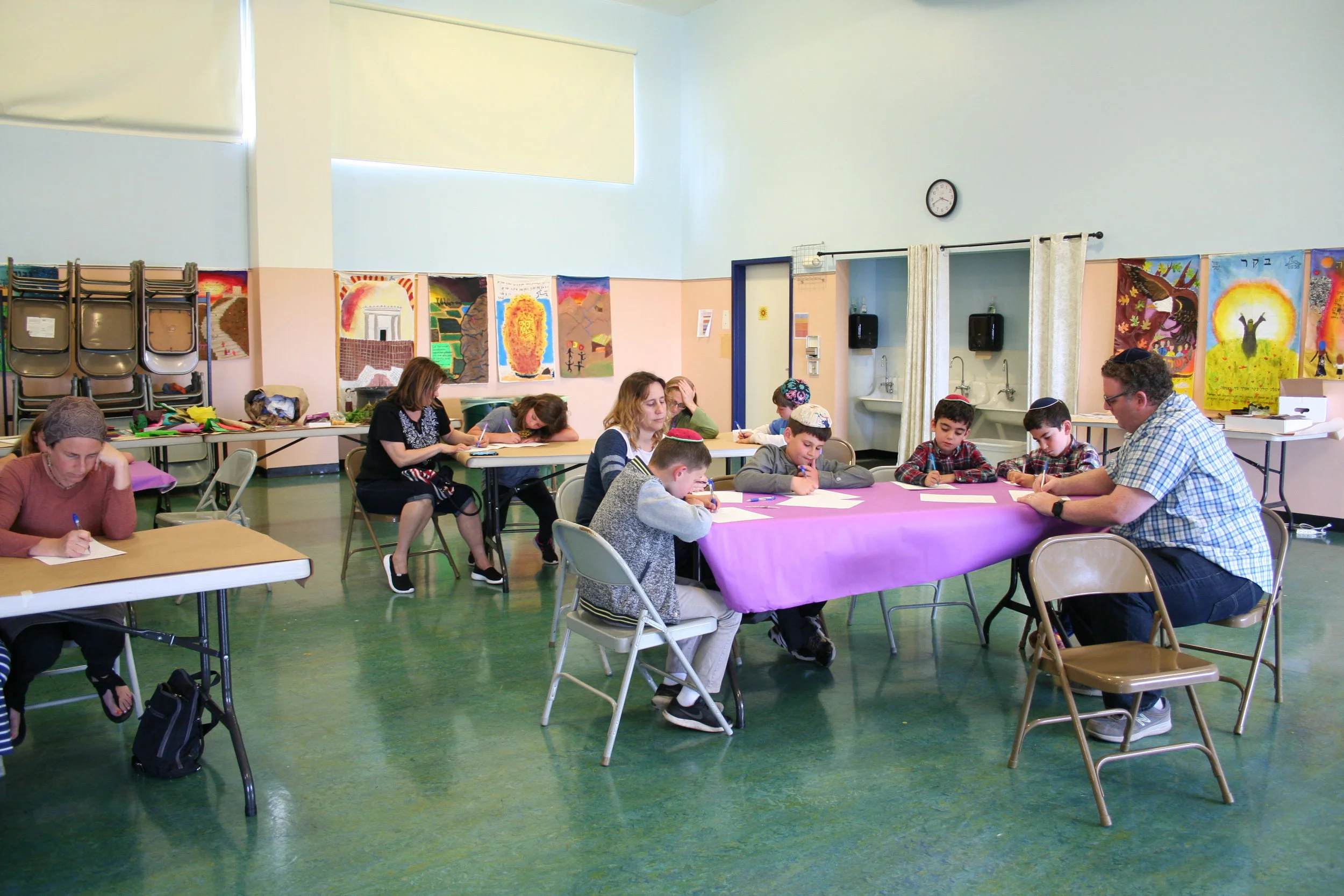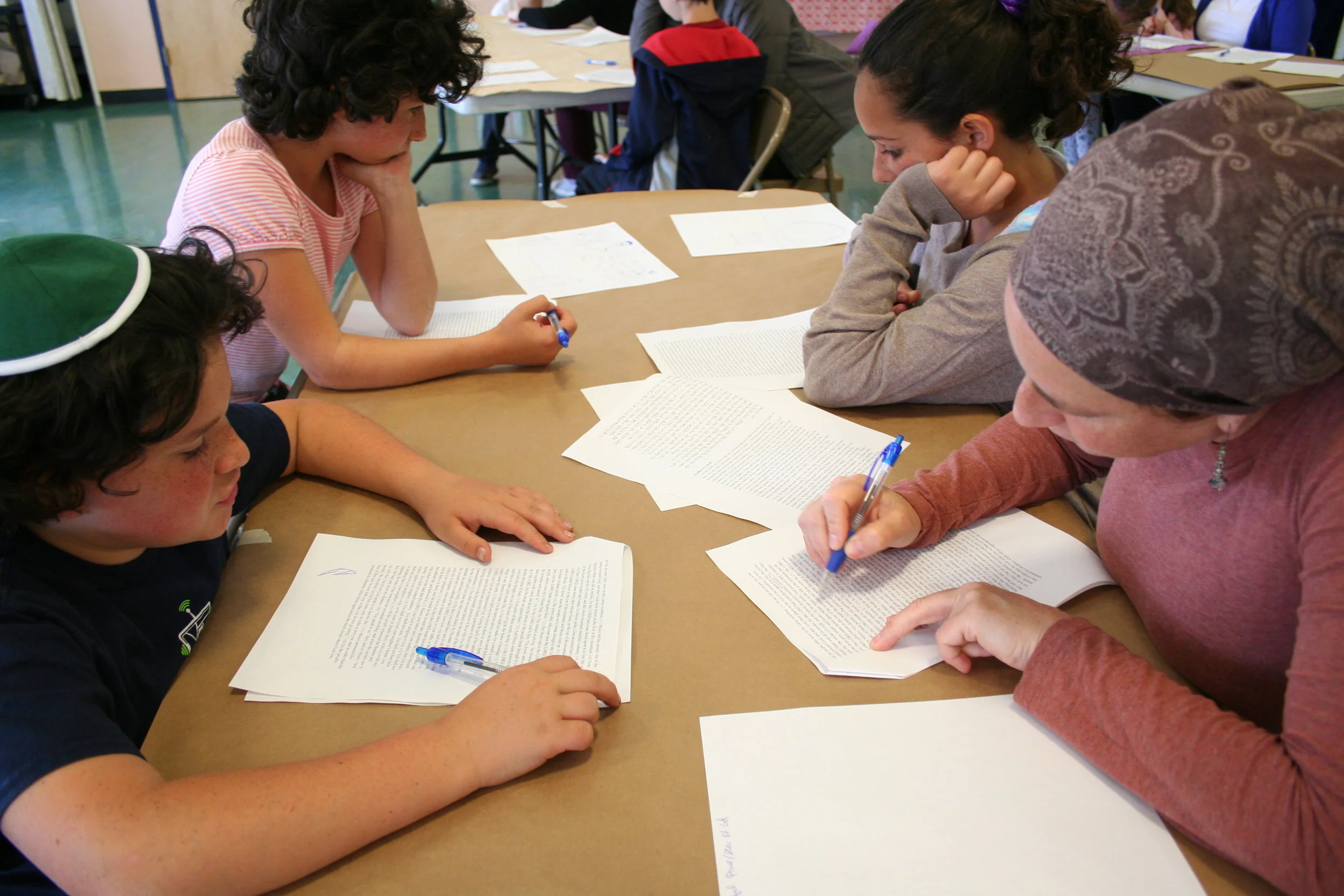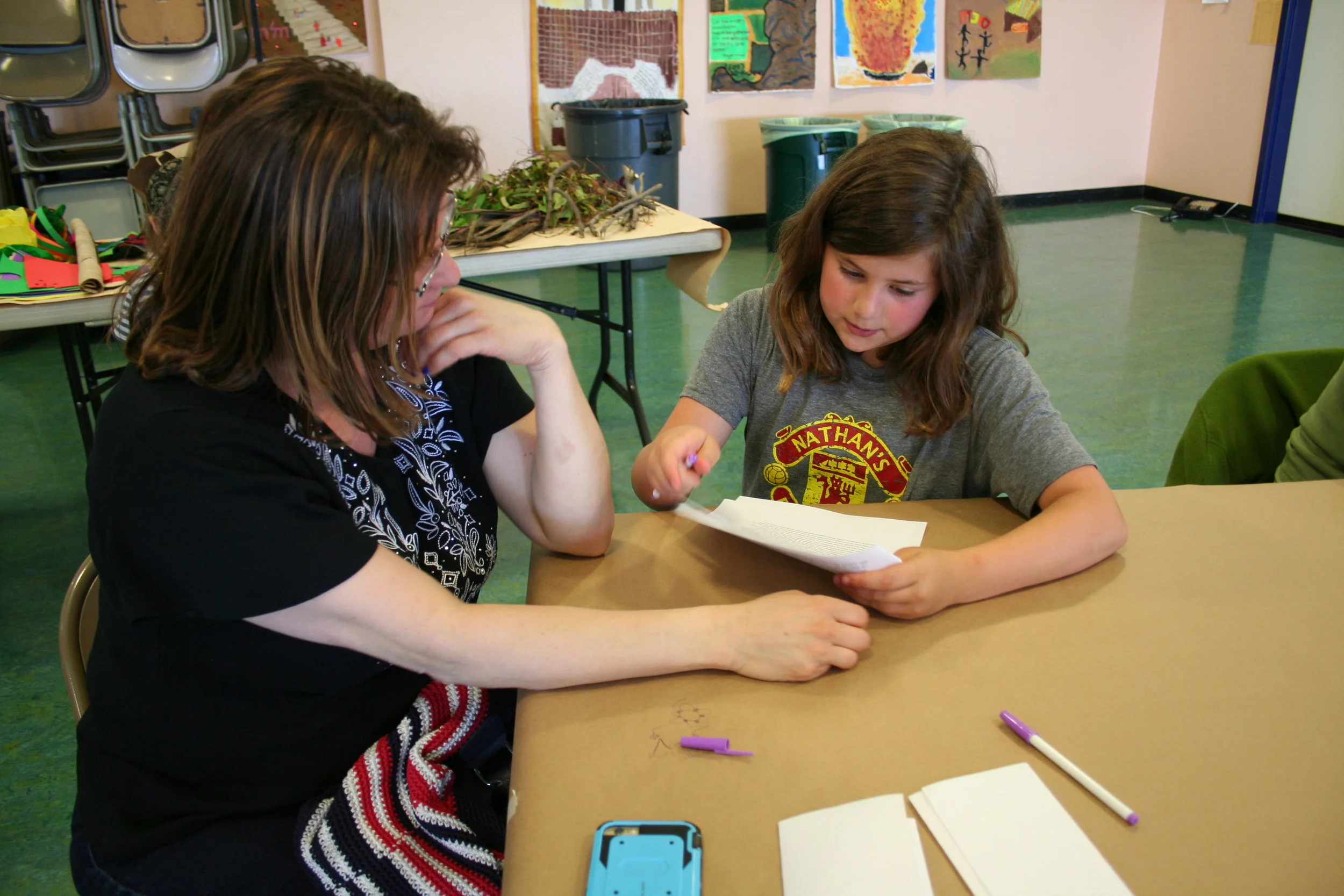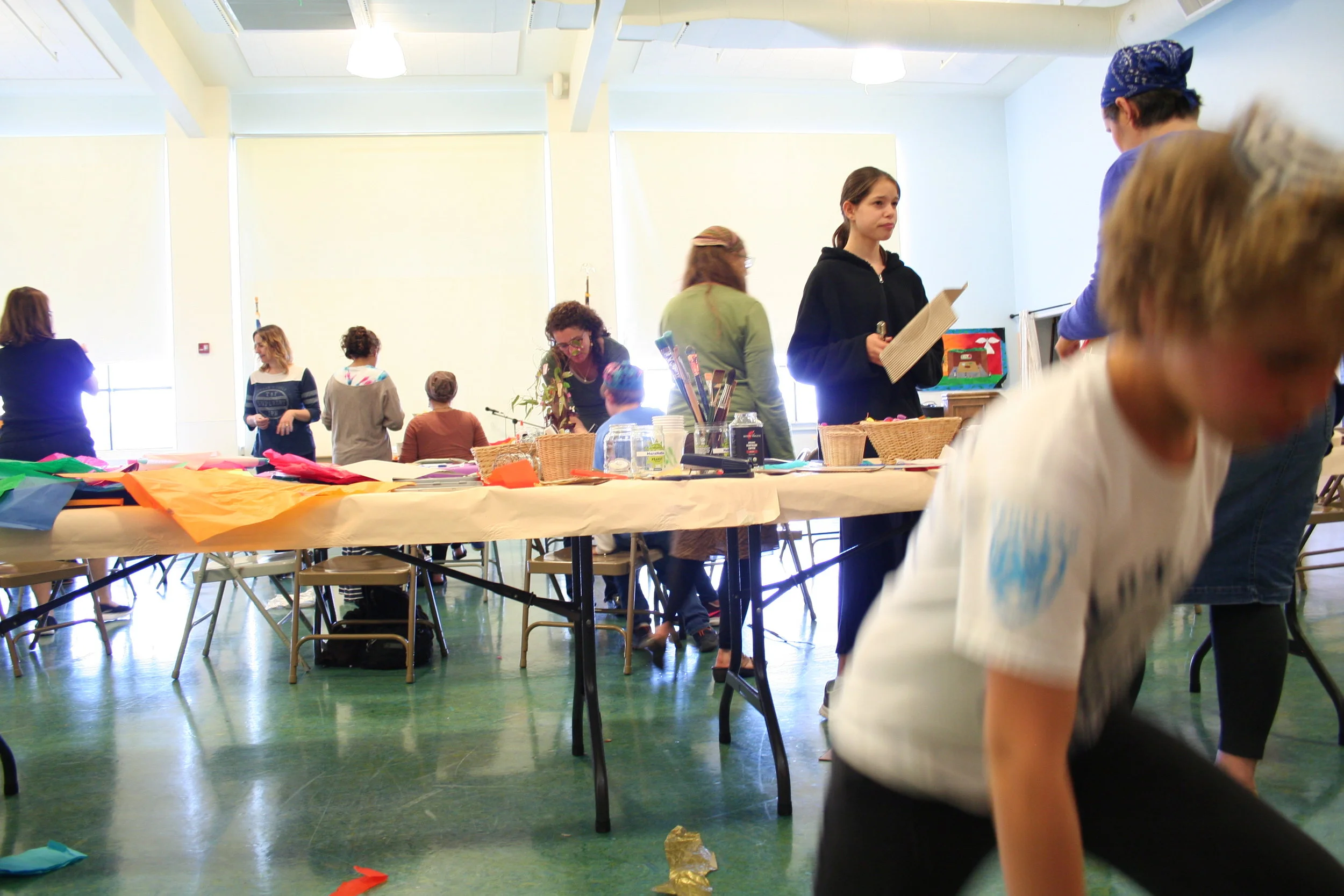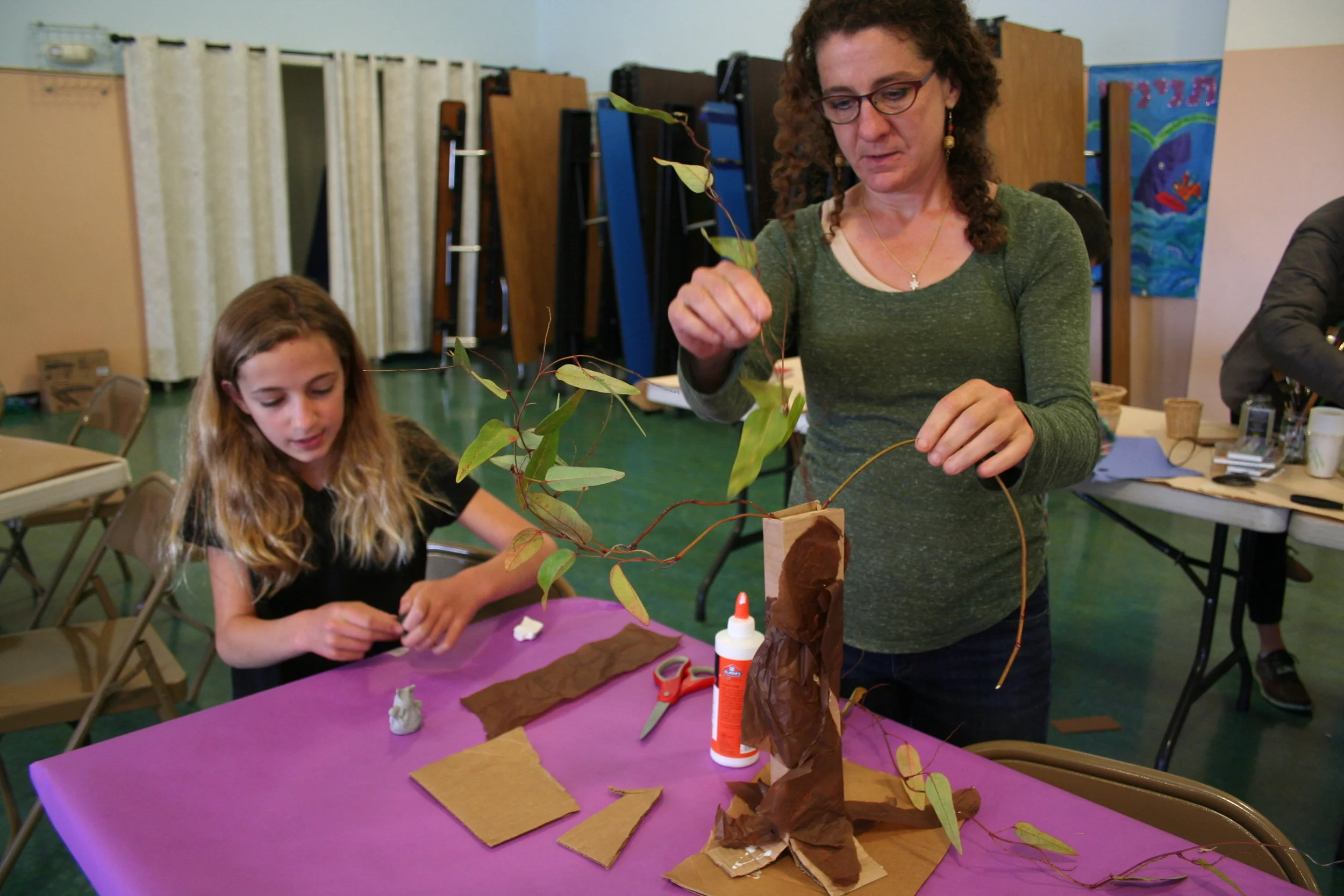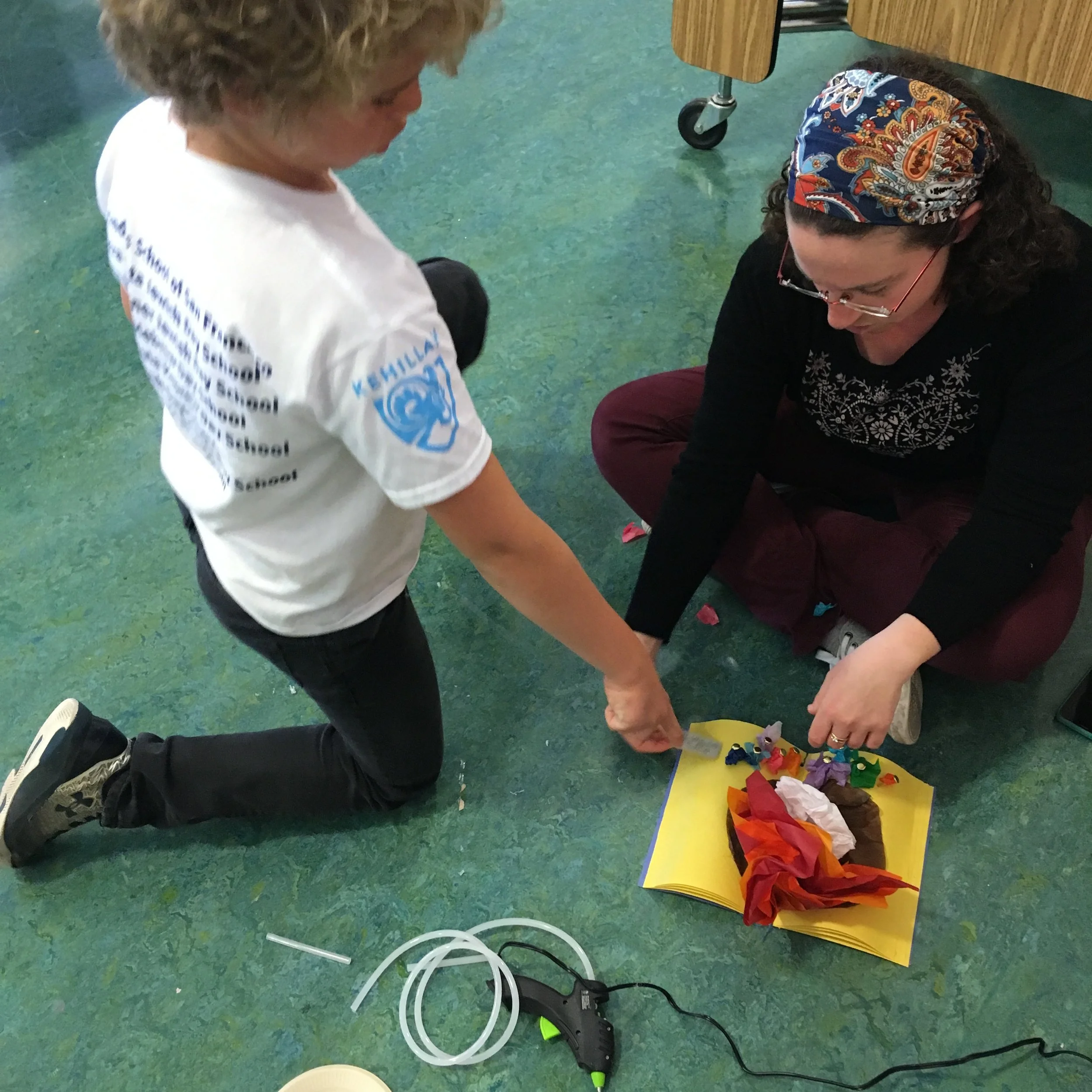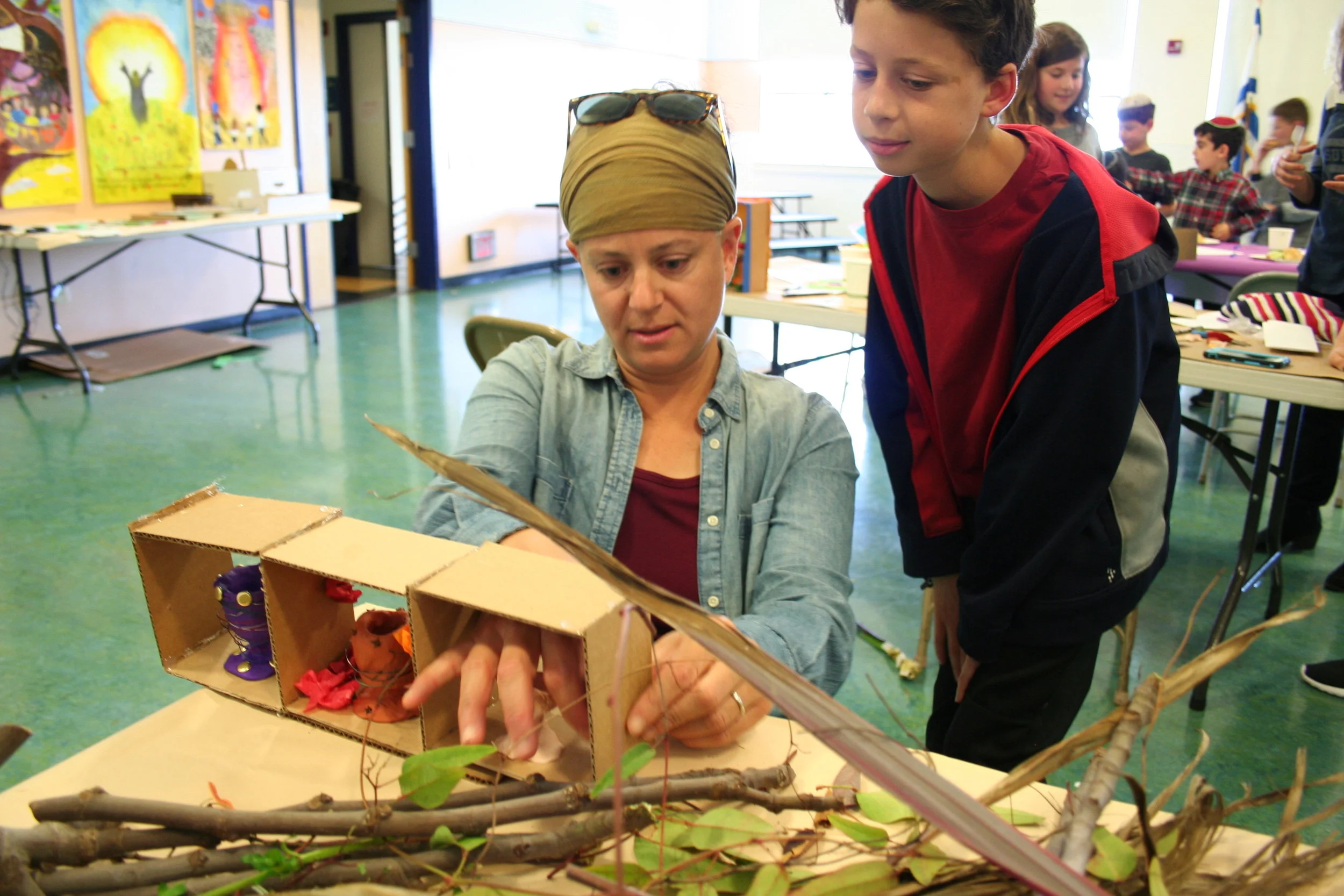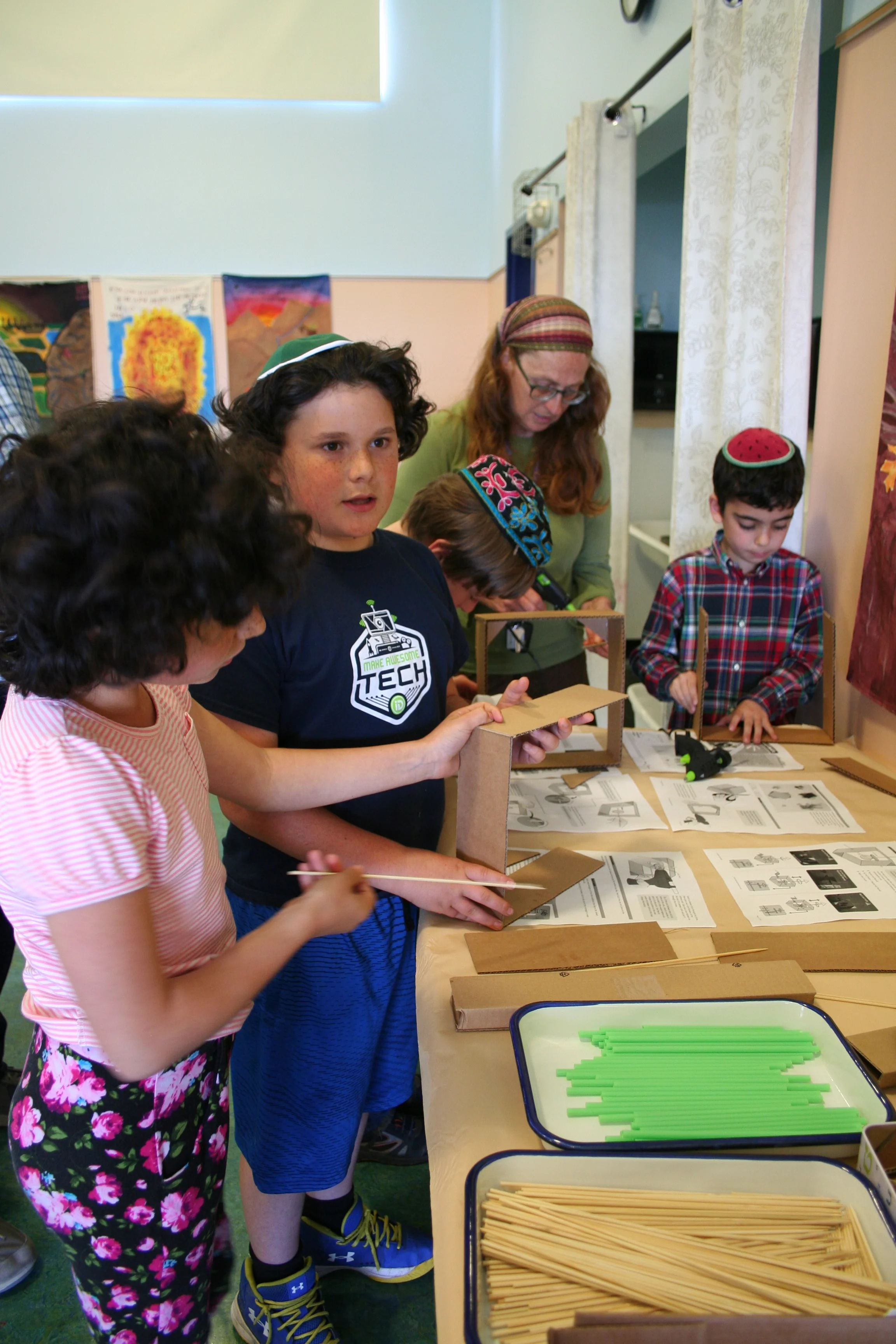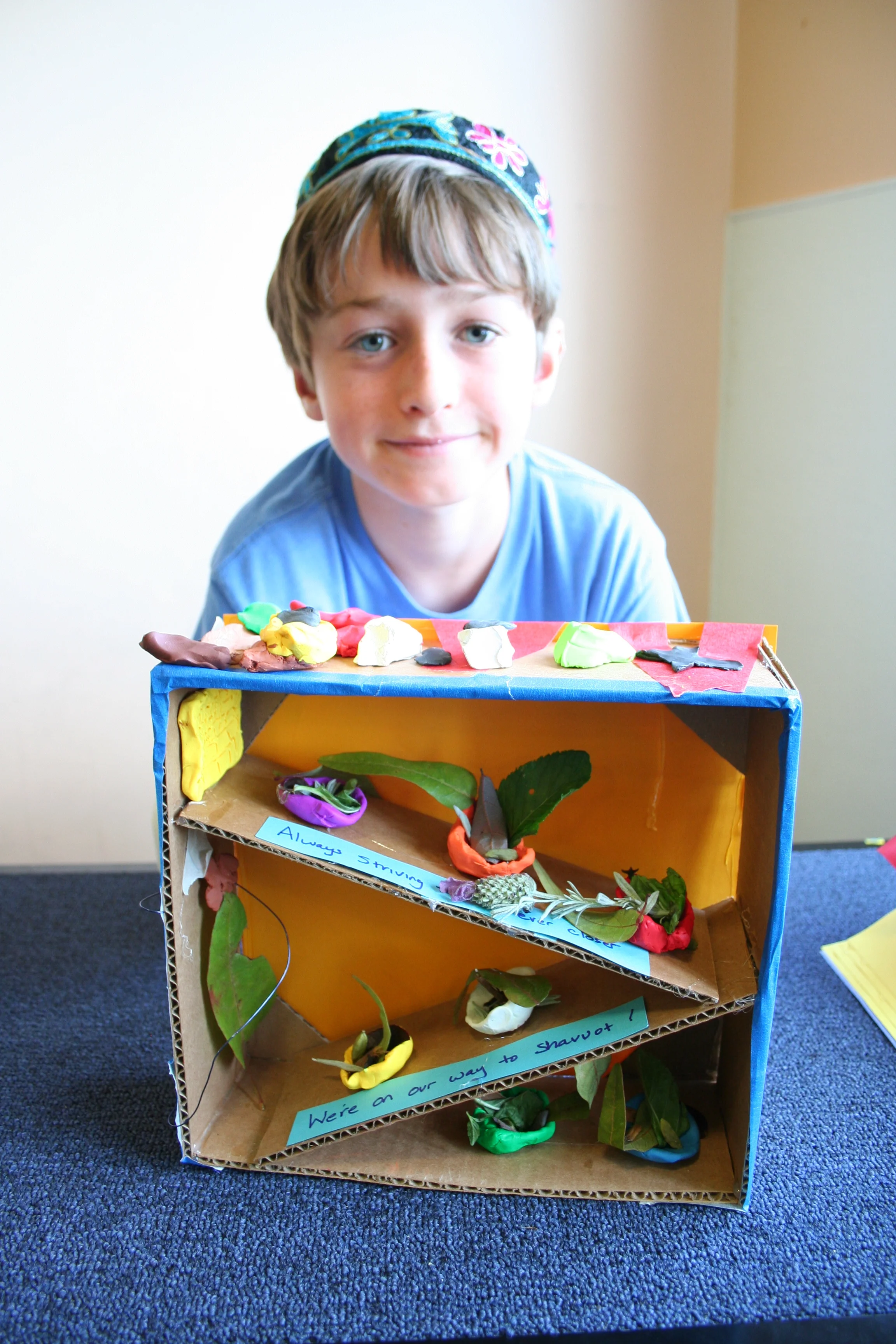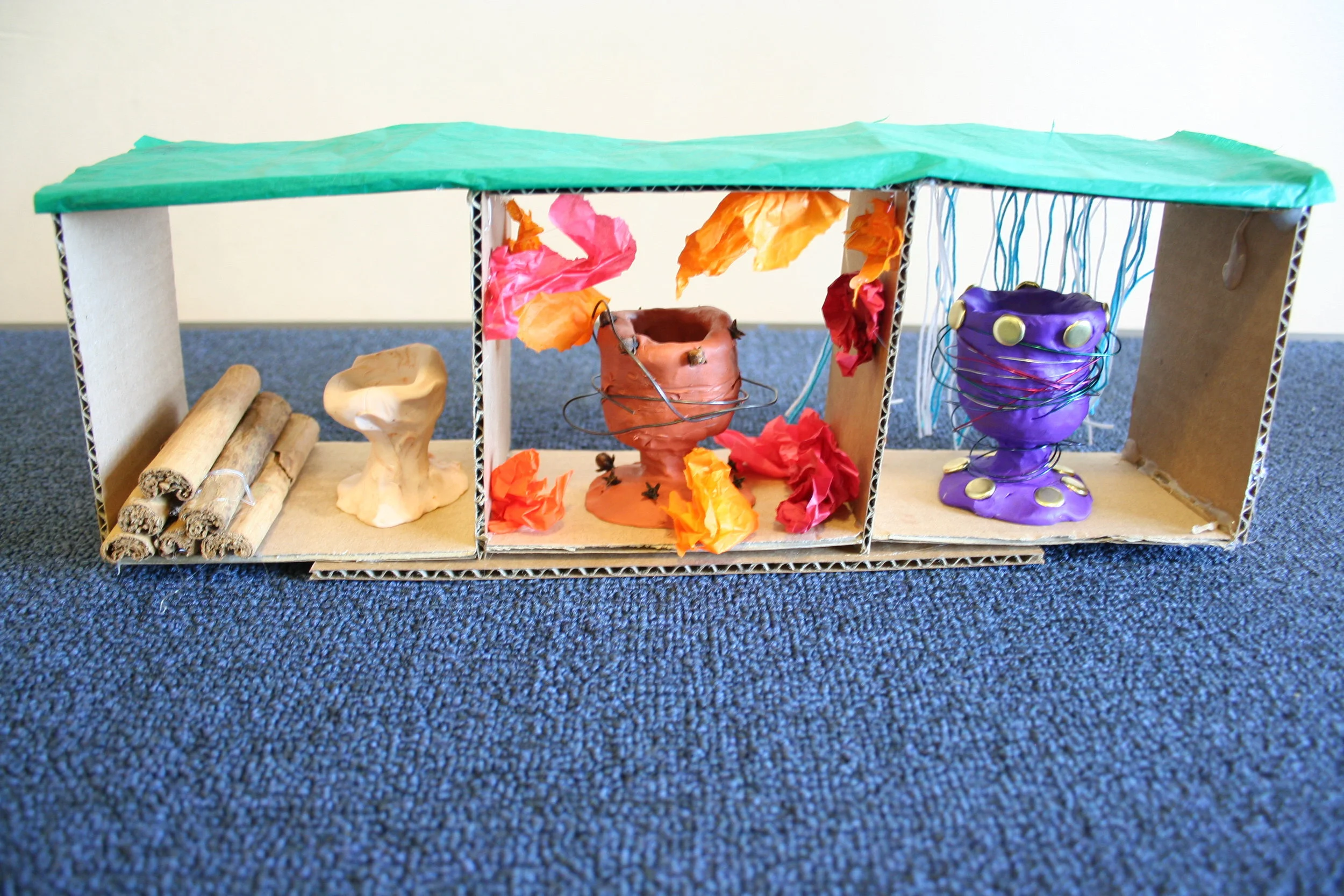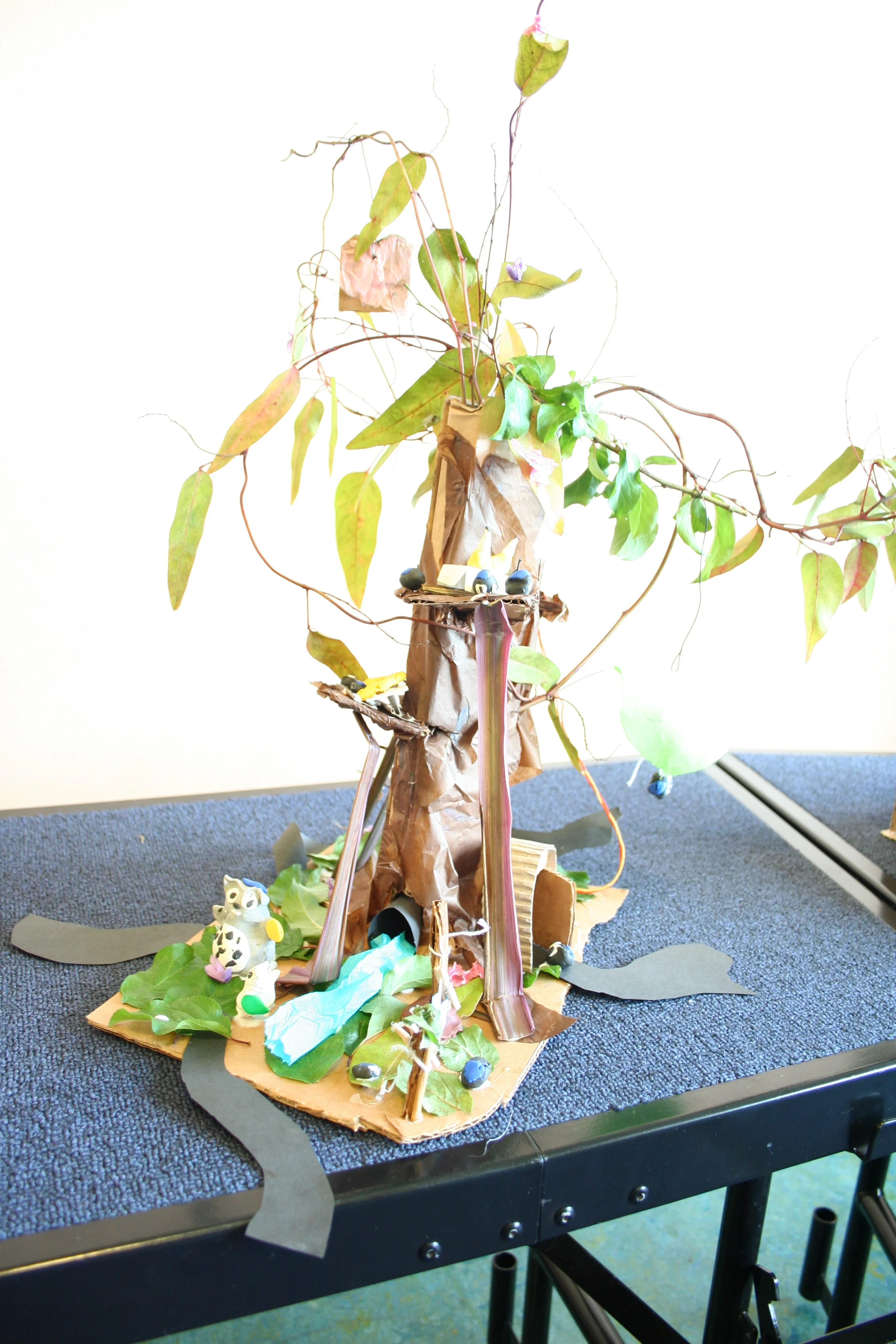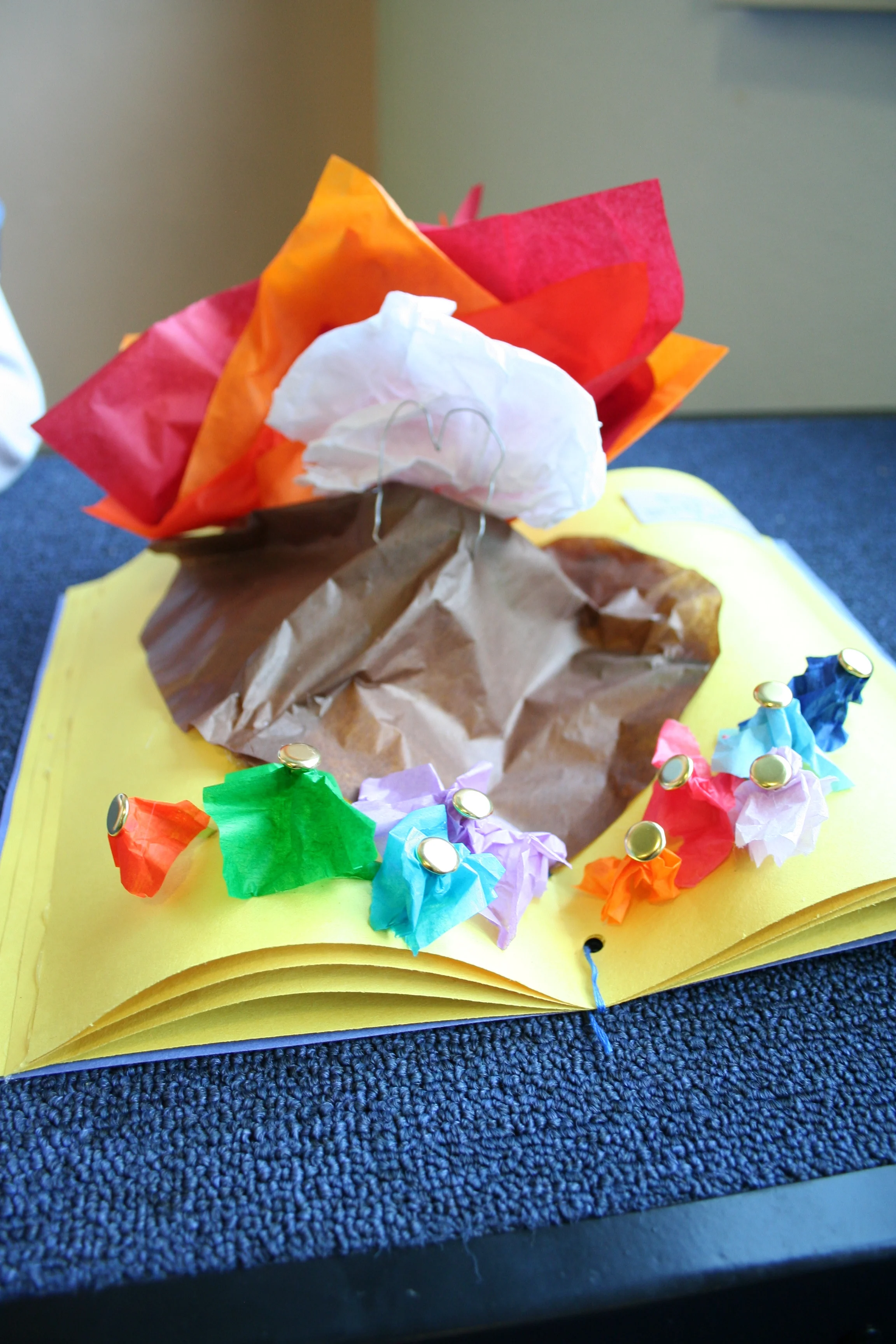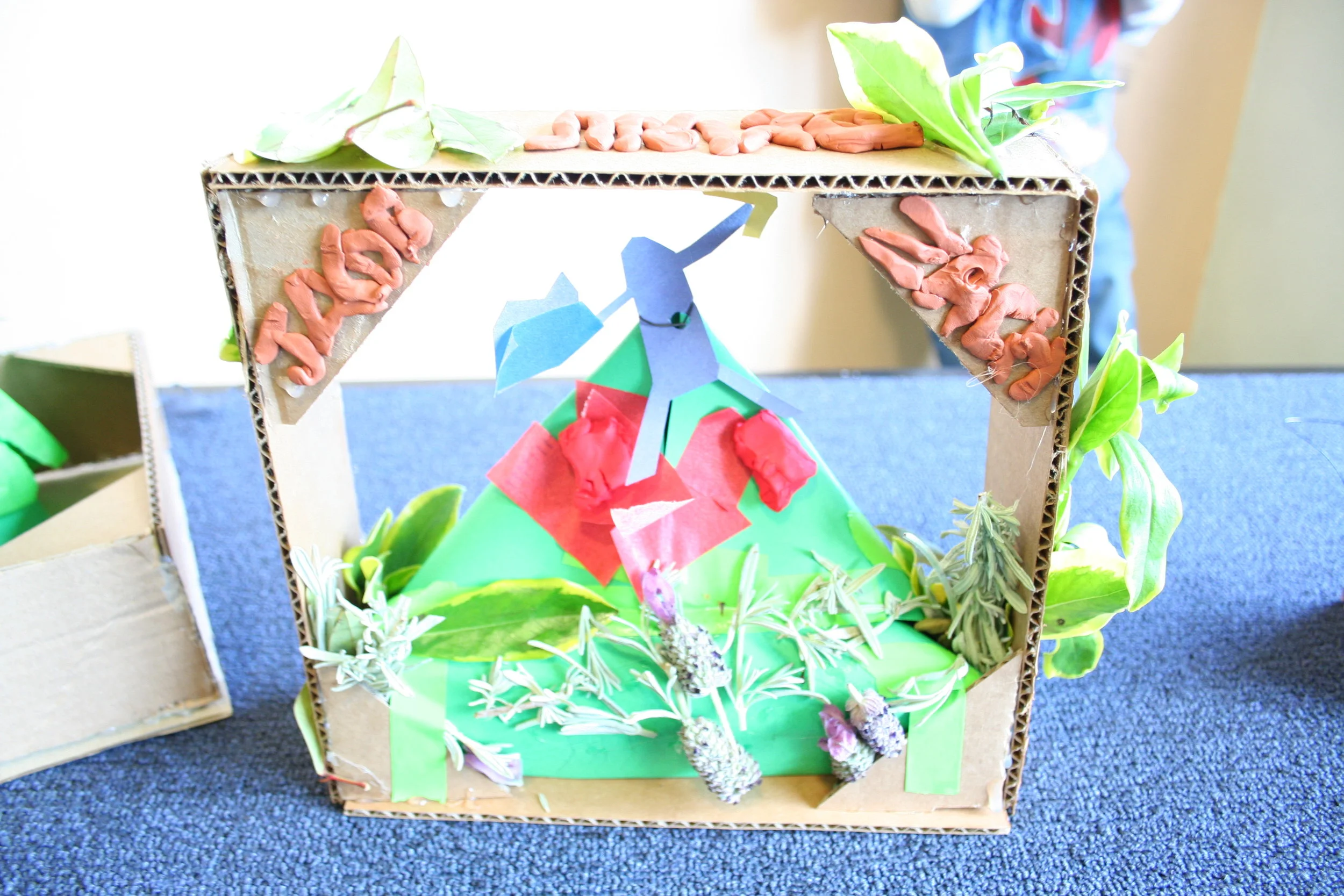Let's be honest: Shavuot is sort of a mysterious holiday. In contrast to Sukkot and Pesach where there are very clear guidelines regarding what we're required to do, on Shavuot we have options and tasty food, but none of it is required/a mitzvah on the level of dwelling in the sukkah or having a seder and eating matzah.
As Ezra (4 years old at the time of this story) once asked me, Mama, is Shavuot actually about anything?
At our recent Shavuot prep event with Oakland Hebrew Day School for parents and children we tried to get a handle on some of that mystery through our learning and tinkering.
We grounded our investigation by learning b'chevrutah (in pairs) the original account of Matan Torah in Shmot/Exodus 19:1-20:18, the giving/receiving of the Torah at Mount Sinai, an event which is traditionally and calendrically linked to Shavuot. We also looked at two Hasidic reflections on the Jewish people's experience of this event.
The giving/receiving of the Torah can also be described more broadly as Revelation -- becoming aware of God's presence, and of our personal relationship with God. The Torah can then be understood as a framework for scaffolding or giving structure to that personal relationship.
Shavuot, like every Jewish holiday, returns us to a singular moment in our history and invites us to reenact that in some way. It also provides the opportunity for reawakening to the continuous re-occurrence on a spiritual plane of that singular event. On Shavuot we received the Torah way back in the desert, but our tradition teaches us that that giving of the Torah happens anew (or continuously) all the time. (The source for this got bumped from our source sheet, but take a look at Devarim/Deuteronomy 5:19 and accompanying Rashi if you're interested!)
As we learned the Matan Torah biblical text, each chevrutah reflected on the following question: What are three central elements that contributed to the experience of Revelation at Mount Sinai?
One parent noted that initially the introductory text to the Ten Commandments felt confusing. "There's so much going on, smoke, people being told to do this and that, and everyone is just waiting to hear the ten commandments."
To which I say, exactly! What is the story with all that smoke, the loud shofar blasts, the very specific choreography and instructions?
Another person noted that we were there alone. On our own as individuals? No, alone together.
Everyone arrived at their own nuances in answering the question of what three components were central to the Revelation experience. Torah, community, majesty of nature. Fear, Torah, Commitment/relationship.
We also wove into this the insights from the Maor V'Shemesh (Rabbi Kalonymus Kalman Epstein of Krakow) and the Derech Hamelech (Rabbi Kalonymus Kalman Shapiro, great-grandson of the Maor V'Shemesh). Each of these Rebbes reflect on how how our access to revelation arrived (and continues to arrive) through each other.
From that foundation we dove into making, with the goal of creating items that reflected our personal understanding of revelation. Ways we access that awareness already, and ways that we'd like to be more receptive to it. Reflecting on the singular event of Matan Torah, and the ongoing continuous revelation.
And then...after some mysterious alchemy involving lots of hot glue guns working over-time; delicious smelling cardamom, cloves, cinnamon and assorted greenery; many colors of clay and paper and tape; with an increasingly Master Chef level of energy; and especially, with some amazing conversations happening...we were suddenly in the presence of a whole host of wonderfully rich and unique 3D reflections of Shavuot and revelation.
A newly beloved book in our household (Beekle, by Dan Santat) concludes: And together, they did the unimaginable.
To which Ezra (now 5.5 years old) asked, what does the unimaginable mean?
While I came up with some answer at the time, these creations would have been the prefect means of explanation, as they were literally unimaginable. I could never have dreamed up what each chevrutah arrived at, and neither, I believe could they have before actually just rolling up their sleeves and getting to work, learning and creating with hands heart and brain all together.
All of which feels quite fitting for Shavuot. The great mystery remains, the impossibility of totally understanding how we are in relationship with God, even the fact that the Torah is on some level unimaginable. And yet being aware of the access points through Community, Nature and Torah, or whatever components of revelation most speak to you, allows us to walk into Shavuot and the mystery of revelation with the excitement and energy of an explorer, as we each search for the doorways that speak to us in this moment, and connected through history.
And with that, I'm just about to send you on your way into the last few days of the omer. But I can't leave you without giving a few notes on each of the creations, because they were not only unimaginable, they were also totally fabulous in ways that a single photo can only begin to convey.
Juliet and Leif: We're on our way to Shavuot, always striving to get ever closer. The contents of the baskets represent the 7 species of the land of Israel that would have been brought as bikkurim. The elements above the box represent the 10 plagues that finally touched off our leaving Egypt, and walking towards receiving the Torah and entering the land of Israel.
Tania and Daniel: (Quoting from Tania's Facebook post, because she'll say it best:) "We learned the text about Matan Torah, then chose three essential elements of Revelation and represented these concepts in our collaborative 3D triptych. The first window shows the beginnings of a clay vessel, just emerging from the earth/slavery/wilderness. The second window features a formed vessel in the fire, in a state of awe. The final window’s vessel is adorned, colorful, ready to engage in holy relationship/mitzvot.
Ruth and Sara: A tree of Torah, with many doorways and access points in. There's even a person parachuting in!
Vered and Be'eri: Vered noted that for her the most powerful component of Shavuot is the extra time learning Torah. But one also wants to feel that fire of a communal experience. So Vered and Be'eri depicted that as arising from the sefer, the holy book, where one arises from the other. They had originally hoped to do a pop-up book, but decided to do this version to make something that could be accomplished within the time we had.
Vered and Tamar created a personal image of Mount Sinai.
Pilippa, Jakub and Aidan: When we were all reflecting together, I asked, what surprised you in the process of creating? Jakub said he was surprised that their creation centered around the story of the golden calf.
Naama, Melia, Chana Ella and Dovid: The mountain has a mechanism in the back that causes it to shake, which reflects the midrash. The luchot at the top of arch represent our ketubah/marriage contract with God that is the Torah. The bottom section is an interactive 10 commandments that you can scroll through,
Nechama, Adi and Ori created an image of standing at sinai, where everyone is an individual, but collectively make up Yisrael, the people of Israel dancing together.
Judah, Jacob and Zach: An image of mount sinai, surrounded by greenery and the names of this item's creators. the Moshe figure has a mechanism in the back that allows him to move up and down the mountain. Pretty awesome.


